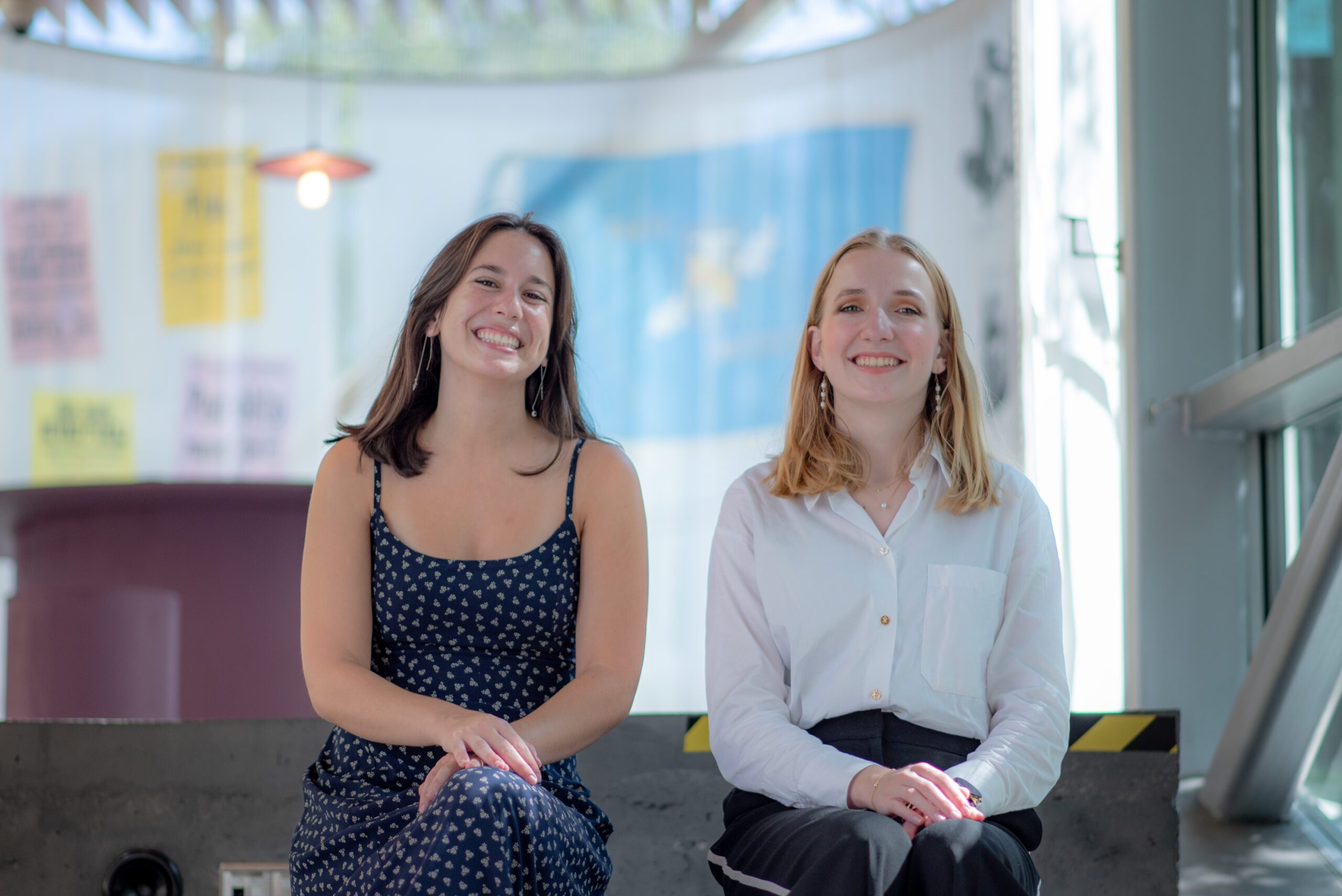Lily
This summer, I had the incredible opportunity of working at Vabamu Museum of Occupations and Freedom in Tallinn, Estonia. When I arrived in Tallinn on June 23rd — just in time to check out a Jaanipäev (Midsummer) celebration — I wasn’t sure what to expect from this experience. I had a lot of nerves, excitement, and questions. Two months later, I’m sad to be leaving Tallinn and will cherish my summer full of new knowledge, experiences, and friendships!
I always looked forward to my days at Vabamu. Twice a week, I worked in the museum’s collections at their off-site storage location. In the collections, I spent my time helping make sure that the museum’s artifacts were stored properly to preserve them for generations to come. I mostly worked with photos and letters, but I had the opportunity to learn about the wide array of objects housed in the museum’s collections. My favorite moments in the collections were when I stumbled upon an emotional or meaningful artifact, like a flower sent in a letter from someone in Tallinn to a loved one in Siberia or a drawing from a young child.
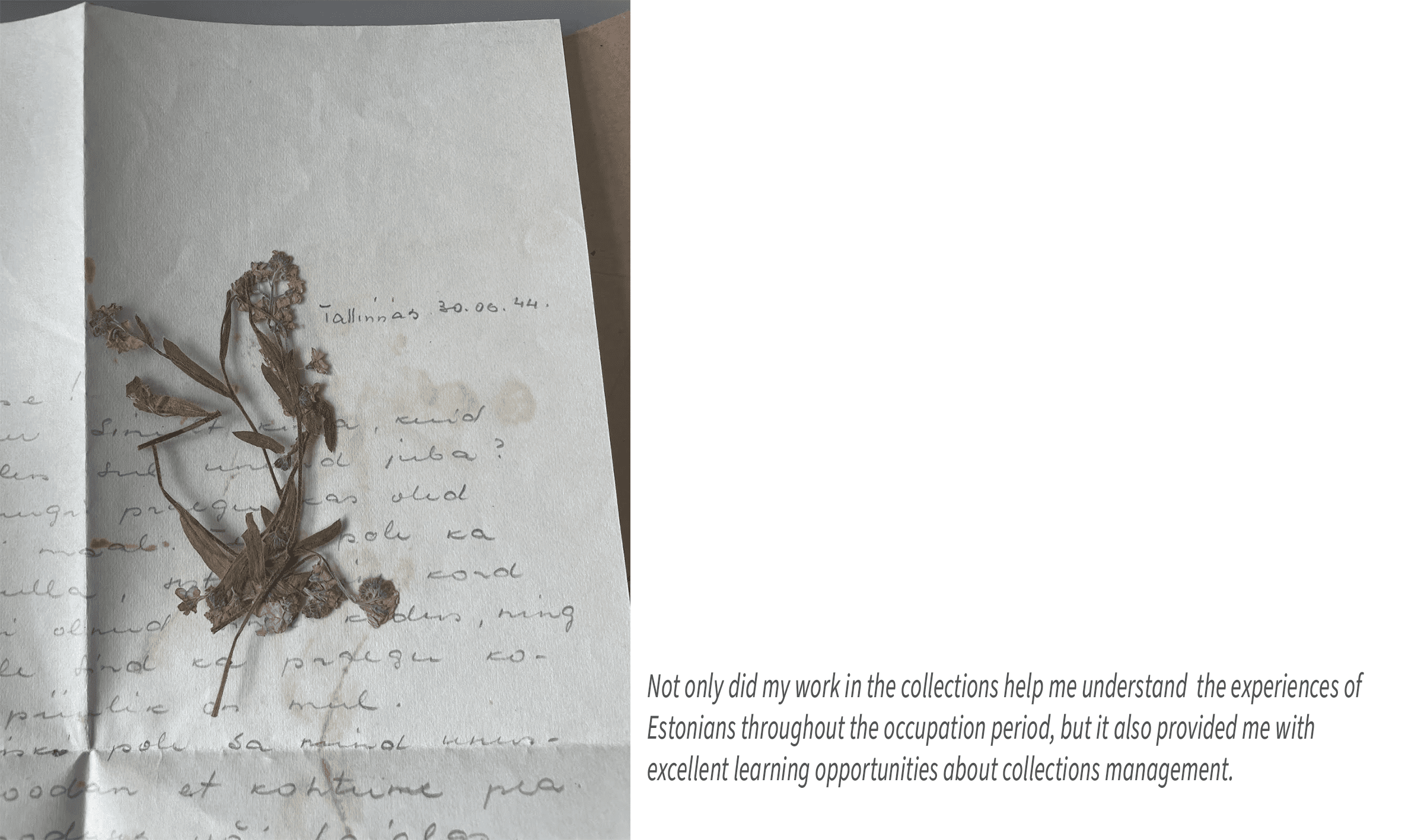
I spent the rest of my working days at the museum itself, working on a variety of tasks. One of my main objectives for the summer was assisting with the development of the Friends of Vabamu program, an annual membership program to help bolster the museum’s fundraising efforts and allow visitors from abroad to stay connected with Vabamu. As we worked to brainstorm benefits to offer members, I completed a number of interviews with museum visitors to better understand their interests. I loved speaking with visitors from around the world, all of whom were passionate about Vabamu’s mission.
As part of my internship, I also had the opportunity to contribute to a temporary exhibition about the history of women’s movements and feminism in Estonia. I spent part of my summer working on a poster to add to the exhibition, drawing connections between the exhibition’s content and the life of Dr. Olga Kistler-Ritso, the founder of Vabamu. Developing this poster was an exciting opportunity to learn about exhibition creation and design, and I was proud to see my work displayed in the museum at the end of my internship!
One of my favorite aspects of the internship was “Museum Fridays,” where I had the chance to spend one day a week exploring the many museums in Estonia (for free, thanks to my museum worker’s card)! Estonia has so many fascinating museums, and being able to visit them let me not only learn about the country I was living in but also learn more about museum work, collections, exhibitions, and more. One of my favorites was the Lennusadam Seaplane Harbour Museum, where visitors have the chance to step into an authentic submarine from the 1930s. I also loved the Estonian Museum of Applied Art and Design — I spent hours walking through their displays of textiles, ceramics, jewelry, and more.
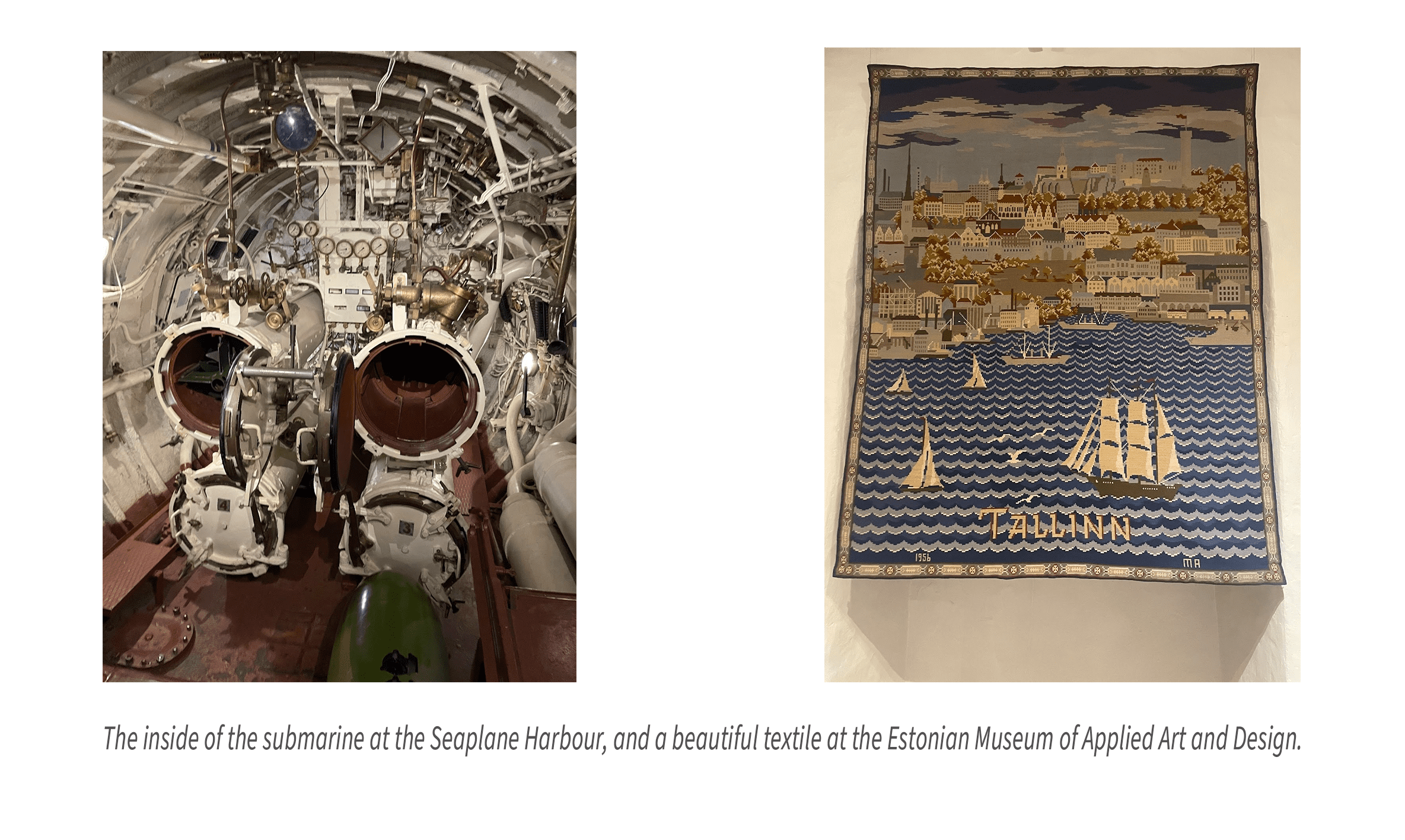 Getting to know and work with the Vabamu team was so special. Everyone was welcoming, excited to show us their work, and curious about our interests and goals. I loved learning about their lives, their interests and experiences in museum work, and their advice about how to spend my summer in Estonia. A highlight came at the end of my internship when the Vabamu team spent a night at a cabin in Estonia’s countryside. We ate dinner together, played games, and explored the area. My experience in Estonia would not have been the same without the kindness of everyone at Vabamu.
Getting to know and work with the Vabamu team was so special. Everyone was welcoming, excited to show us their work, and curious about our interests and goals. I loved learning about their lives, their interests and experiences in museum work, and their advice about how to spend my summer in Estonia. A highlight came at the end of my internship when the Vabamu team spent a night at a cabin in Estonia’s countryside. We ate dinner together, played games, and explored the area. My experience in Estonia would not have been the same without the kindness of everyone at Vabamu.
Apart from my internship, another incredible experience was being able to visit Riga and Tartu with the Stanford cohort and having them come visit us in Tallinn! Kadri’s itineraries made sure that we learned a lot about the cities and their history, got to explore as much as possible within two days, and had fun while we were doing it. She also helped us get special access to sites across the Baltics, which was such a treat! Other memorable parts of these trips around the Baltics included the Estonian Song & Dance Festival, visiting former KGB prison cells in Riga, and canoeing on Ahja River during our weekend in Tartu.
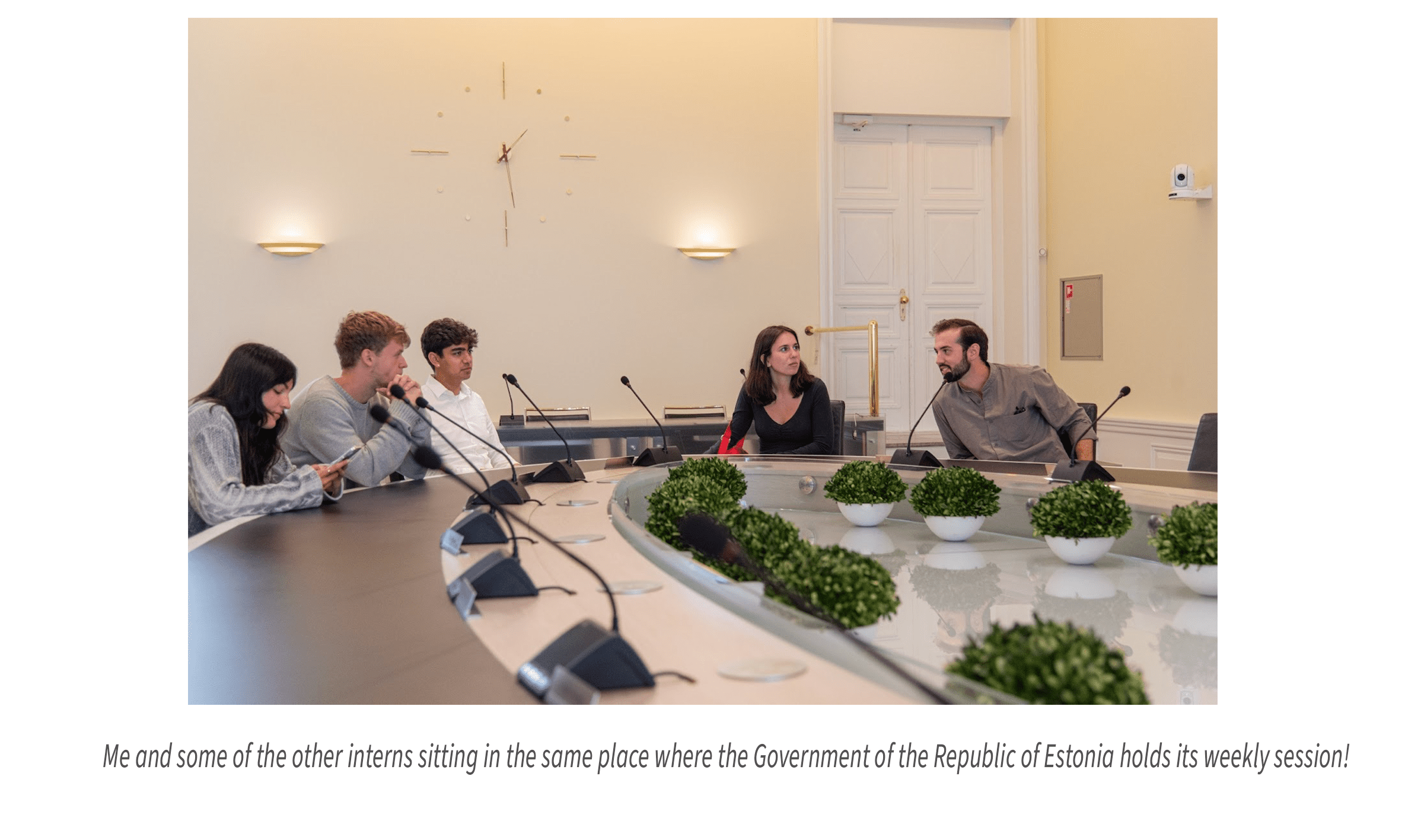
I will always cherish my week spent as a mentor at Hüppelaud, a hackathon for Estonian youth. The group of students that I worked with spent their week developing an app designed to be used in schools to demonstrate the impact of transportation on carbon emissions. Along with mentoring them as they developed their idea, created the app, and presented their pitch, I also got to know the rest of the students and mentors at the program. Talking to them, I learned an incredible amount about Estonian food, culture, traditions, and more — I tried all their favorite types of kohuke, got to know the TV shows they watched as children, and became accustomed to early morning swims in the (freezing) Baltic sea.
When I wasn’t working or traveling on group trips, I had plenty of time to explore Estonia and other nearby countries. I took a weekend trip to Stockholm and spent a day in Helsinki, but my favorite way to spend my free time was by exploring Tallinn and other parts of Estonia. I never got tired of walking around Old Town and always found a new shop or viewpoint to check out. I also loved going thrifting in Telliskivi, trying new foods at Balti Jaama Turg, and watching the sunset at Linnahall with my roommates. Estonia has beautiful nature, and I loved visiting its many beaches, bogs, lakes, and more. I have amazing memories from the concerts and music festivals I went to and will make sure to introduce my friends to all of my favorite Estonian artists (I have dreams of bringing Nublu to perform at Stanford… stay tuned!).
Spending this summer living in Tallinn and working at Vabamu was such an incredible experience. While I was certainly nervous about moving to a foreign country, those nerves disappeared within my first week of being there. Getting to know Estonia’s culture, people, and history is an experience I will never forget. I learned incredible amounts about museum work, Estonia, and myself. I am forever grateful for this opportunity and can’t wait until I can come back to Tallinn one day!
Elsa
Now that my time working for VABAMU and living in Estonia is coming to an end, I can say that I truly loved my experience here. I was born in Lithuania, so I began with a great knowledge of Baltic history and modern-day culture. However, as any Baltic person– including myself– will tell you, the three Baltic states are all very different from each other. This summer, I was able to get to know Estonia in the best way possible: living there. For this brief period of time, Tallinn was my home; I would even miss it when traveling elsewhere. I could not have done any of this without the generous support of Stanford Global Studies or VABAMU.
From the first day of my internship and even before, I felt incredibly supported by the VABAMU employees. They were all incredibly welcoming, and I found myself comfortable in the office before the first week was over. Working in collections, I was able to get a glimpse into VABAMU’s vast photography archive, and a firsthand glimpse into the everyday life of occupation, whether that be work in a prison camp, family photos from holiday celebrations, or the protest movements of the late 20th century. I was also able to handle letters and other sensitive material, my favorite being a collection of sketches drawn by an Estonian prisoner in Karlag. At Huppelaud, I spent a week serving as a mentor for a startup bootcamp aimed at teenagers, an entirely new experience for me. I bonded with my team and with my fellow mentors, and it was so inspiring to see the products that the students were able to come up with in such a short period of time. The future for them is bright. I also created a poster for the Women’s Exhibition with statistics about Estonian women, and in the process I was better able to understand their current situation and the improvements made in recent years. The poster is now hung up in the exhibit, and I am proud to have left my mark in some way at the museum.
I also enjoyed the freedom that my internship allowed for me to work remotely, as I was able to explore Tallinn and its cafes, my personal favorite places to work. (T35 and La Boulangerie were some of my favorites, if you’d like a recommendation.) My unique tasks were digitizing the “E-Estonia” exhibit for Stanford Libraries and creating scavenger hunts of the Baltic capitals for future interns. These tasks were assigned to me because my supervisors knew what I was interested in and wanted me to work on something I was passionate about. I am very thankful for that.
On Fridays, we were given the day off to explore museums. Because of our museum employee status, we were able to visit all public Estonian museums for free. This meant that I was visiting museums far more often than every Friday. I’d like to highlight a few of my favorites. The Seaplane Harbour is an obvious contender because of the sheer amount that it has to offer: from walking inside a decommissioned submarine, examining Viking artifacts, to simulating underwater pressure, there is something for everyone. St. Nicholas’ Church has recently installed a glass elevator to a beautiful watchpoint, but it also has great exhibitions of medieval art. The Banned Books museum was a pleasant surprise, exploring complicated ethical quandaries and free to all. (Tartu also hosts the Estonian National Museum, which is a must-visit. For recommendations in the other Baltic Capitals, the Latvian National Museum of Art in Riga and the MO Museum in Vilnius are both amazing!) However, I would be remiss if I did not mention VABAMU itself. The audio guide that the museum operates through encourages deep reflection and is an innovative approach that I have not seen in any other museum. Though I had taken a course on the subject matter at Stanford before coming to Estonia, the guide made the history something personal, something for me to ponder.
During this summer, I was able to visit all three of the Occupation-related museums in the Baltic states, and I have to say that I preferred VABAMU’s approach the most. This is in large part because it is the only one that explores what comes after occupation: freedom, and what freedom can mean. It is a forward-thinking approach that does not neglect the past, and one that speaks to everyone.
Living and working in Tallinn felt like a dry-run, a rehearsal for adult life. This was my first time living on my own, having to provide for myself and cook all my own meals. I found myself often visiting the grocery store, acquainting myself with local products and trying to find the store that I liked the best. (It was Delice in Solaris, which unfortunately closed for the summer.) One of my favorite things to do was going to Keskturg– the central market– for produce. I specifically wanted gooseberries and currants as they do not grow in the US, and yet I also found myself eating some of the best plums, nectarines, and of course, strawberries that I’ve ever had. The freshness is simply incomparable, and it is a must-stop for anyone that visits the city. I’ve become attached to my little apartment in the city center and I’ll be sad to leave it; I see it as my little nook here in Tallinn. Nevertheless, it is empowering to know that I can live by myself without issues.
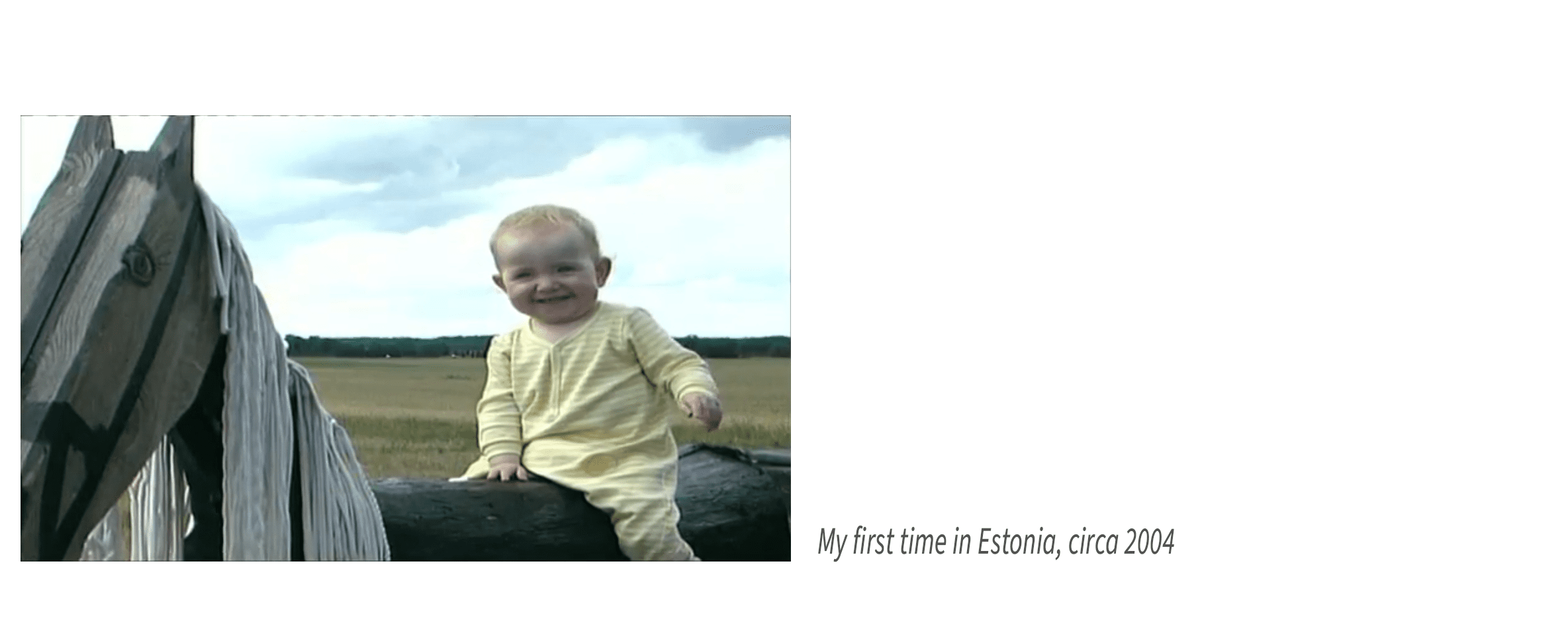
My first and only visit to Estonia before this program was when I was still an infant, so I had few memories of it. I’m coming home with more memories and experiences than I know what to do with; I’ve fallen hopelessly behind on my daily journal and don’t know how I’ll catch up, there’s just so much I need to record, to cherish forever. I went to a dance festival in Parnu, canoed in Tartu, admired the sunsets of Johvi. I voyaged north to Helsinki and south to my hometown of Vilnius. I led a friend of mine from Stanford through the streets of Tallinn and felt like both an amateur and an expert guide. I’ve learned a great deal about this city– the right places to shop, to eat, to swim, to see the best views– but there is still so much left that I could do. I loved my time here, and I’m sad to see it end. Thank you, Tallinn, and thank you VABAMU.
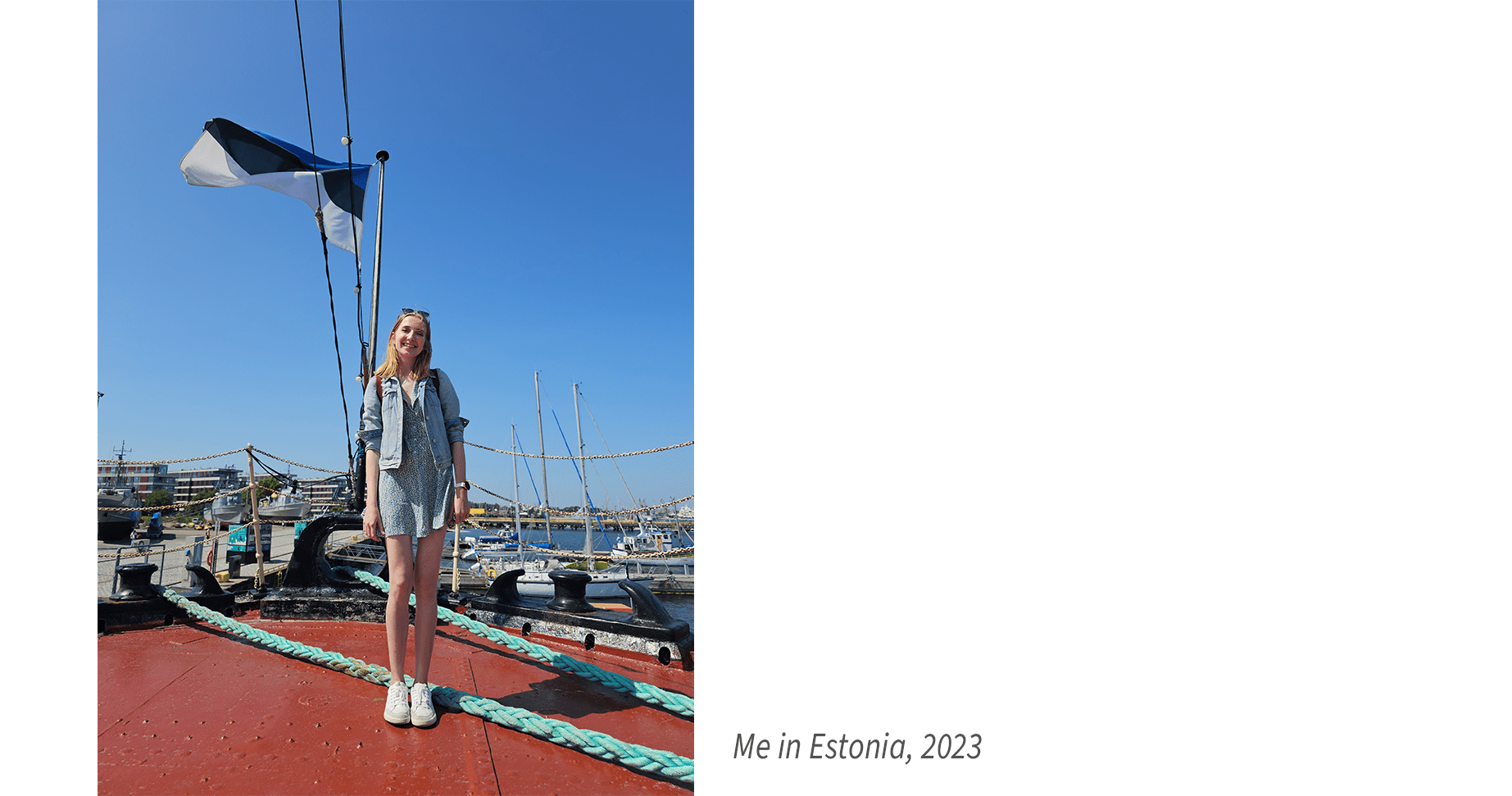
Thank you so much to everyone at VABAMU for supporting and to Stanford Global Studies for making this program possible. We loved our time in Estonia and hope to be back soon!

 Back
Back